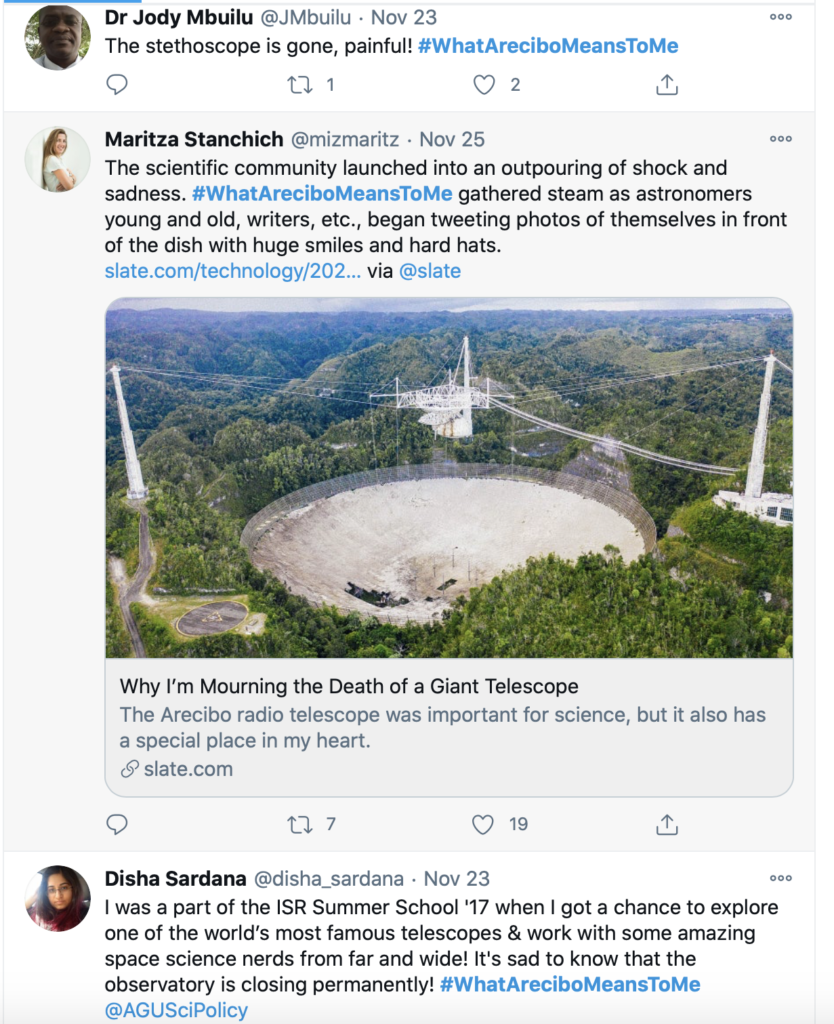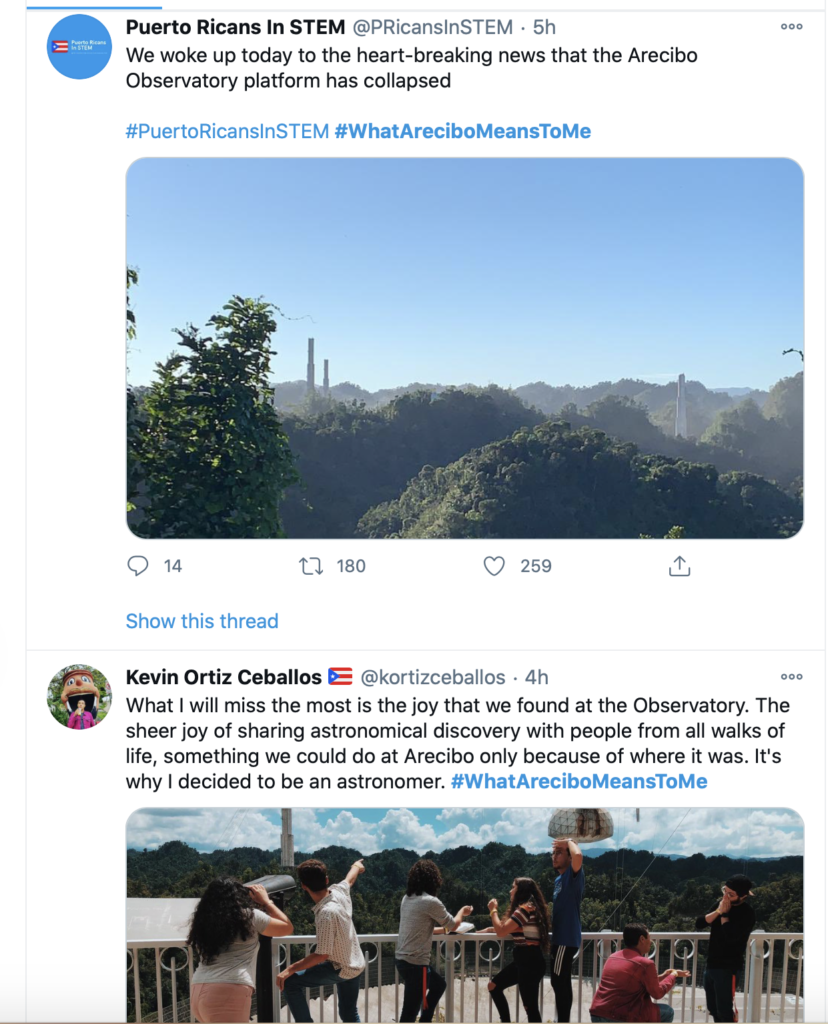The observatory at Arecibo, until a couple of years ago the home of the largest radio telescope in the world, has lost the telescope in a collapse. Two cables had broken, and the National Science Foundation had predicted that the dish could collapse on its own.
They had determined that it would be too dangerous to repair the telescope and were planning to close it. The NSF had announced that they were hoping to keep other elements of the observatory open.
The history of Arecibo Observatory
Professor William E. Gordon of Cornell University recognized the karst sinkhole in Arecibo as a perfect natural location for a giant telescope. He oversaw construction of the observatory, including the 1,000 foot telescope dish, from 1960 to 1963.
Upgrades over the years brought the telescope to a level of power that would allow it to detect a steel golf ball on the moon.
Arecibo has been used to study pulsars, black holes, and the possibility of habitable planets. Researchers won the Nobel prize in physics for work conducted with the observatory.
Arecibo also sent out a famous radio message to the stars in hopes of reaching sentient beings outside of the earth.
Inspiration
Arecibo has been called “irreplaceable” by scientists. It has also provided inspiration for generations of scientists and STEM professionals in Puerto Rico. The #whatarecibomeanstome campaign collected innumerable messages from the global scientific community telling how Arecibo led so many to their lives’ work.
Many people hoped against all odds to rescue the telescope, but it was not possible.
Would this have happened in a state?
The National Science Foundation proposed reduced funding for Arecibo in their 2019 budget. They had been slashing funds since 2006 and proposed closing the observatory as early as 2016. Would such an important and beloved facility have faced budget cuts if it had been located in a state, with Senators and voting Members of the House to speak up for it?
Arecibo received emergency grants from Congress after Hurricane Maria damaged the structures in 2017. Like so many needed repairs, the tasks had not yet been completed.
When a telescope at Green Bank in West Virginia collapsed in 1998, Senators Robert Byrd and Jay Rockefeller came to the rescue. The new telescope built to replace the loss was named after Byrd, who fought hard for it in Congress.
Puerto Rico has no senators.
But Arecibo is not only a terrible loss to the scientific community, it is also an important part of the local economy. What will happen next for Arecibo? The people who survived the telescope collapse in West Virginia wonder about that. They “suspect that Puerto Rico’s lack of representation may stymie or slow any hopes to build something new at the site after the current telescope is demolished,” according to an article at Space.com. “Politically, they don’t have that much clout, and so it makes it difficult.”









No responses yet